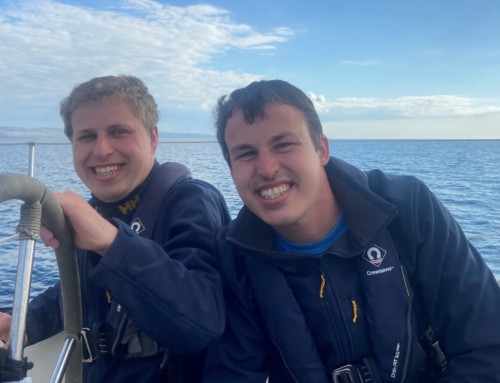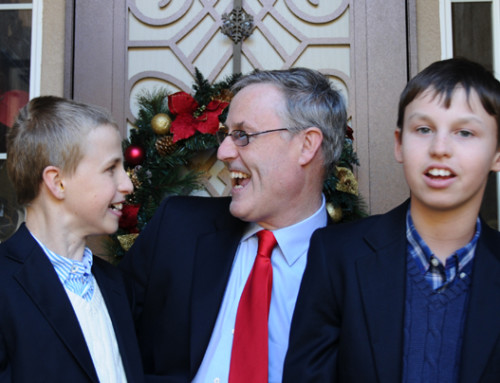Asperger Syndrome
What is Asperger syndrome (AS)?
People with Asperger syndrome have normal intelligence and language development, but also have some autistic-like traits. They may have trouble with social skills, sensory input, and making transitions, and may need rigid routines. Their interests can focus on one area to the point that it is like an obsession. Some experts believe AS is like a “high-functioning autism,” and/or that it is like anon-verbal learning disability (NLD). See also Your Child: Non-verbal Learning Disabilities.
How can I find information and support?
Web sites:
- YourChild: Non-verbal Learning Disabilities
- YourChild: Siblings of Kids with Special Needs
- The National Institute of Neurological Disorders and Stroke (NINDS) has a brief AS information page.
- Asperger syndrome on Kidshealth.org.
- The Yale Child Study Center Developmental Disabilities Clinic has useful guidelines forassessment and diagnosis, and for treatment and intervention.
- OASIS (Online AS Information and Support) offers information, local and online support for kids with AS and their parents, and a book store. You can also find current research projects seeking participants with AS.
- Stanford University Autism and Asperger Research Reports cover topic areas of diagnosis, therapy, neuroscience, genetic, immunology, language, behavior and cognition.
- The Asperger Syndrome Coalition of the U.S. has joined with MAAP Services (More advanced individuals with Autism, Asperger’s syndrome, and Pervasive developmental disorder) to provide information to families. MAAP’s website provides contact information for professional and parent supports in each state.
- A guide for teachers from OASIS to understanding kids with AS.
- Asperger Syndrome: A Guide for Secondary School Principals, an article from Principal Leadership Magazine, on the National Association of School Psychologists (NASP) Web site.
- Tony Attwood is a noted expert on Asperger syndrome. His website contains many useful Asperger and social skills resources.
Books and videotapes for kids and parents about Asperger syndrome:
- Asperger’s, Huh?, by Rosina Schnurr.
A child’s perspective on having Asperger syndrome—written for other children. - Asperger’s: What Does It Mean to Me?, by Catherine Faherty.
A workbook explaining self-awareness and life lessons to youth with high functioning autism or Asperger syndrome. - Freaks, Geeks and Asperger Syndrome: A User Guide to Adolescence, by Luke Jackson and Tony Attwood.
- Asperger Syndrome and Difficult Moments, by Brenda Smith Myles.
This brief book gives advice about dealing with “melt-downs.” - The OASIS Guide to Asperger Syndrome: Advice, Support, Insight, and Inspiration, by Patricia Romanowski Bashe and Barbara Kirby.
OASIS’s guide is parent-friendly and complete. - Relationship Development Intervention with Young Children: Social and Emotional Development Activities for Asperger Syndrome, Autism, PDD and NLD by Steven Gutstein and Rachelle Sheely.
An objectives-based program for parents, teachers, special educators and therapists to use with children ages two to eight. - Super Skills: A Social Skills Group Program for Children with Asperger Syndrome, High-Functioning Autism and Related Challenges, by Judith Coucouvanis.
“Thirty lessons grouped under four types of skills necessary for social success: fundamental skills, social initiation skills, getting along with others, and social response skills. Each lesson is highly structured and organized, making it easy for even inexperienced teachers and other group leaders to follow and implement successfully. A series of practical checklists and other instruments provide a solid foundation for assessing students’ social skills levels and subsequent planning.” - Social Skills Training for Children and Adolescents with Asperger Syndrome and Social-Communications Problems, by Jed Baker.
- Incorporating Social Goals in the Classroom, by Rebecca A. Moyes, Susan J. Moreno.
For parents and teachers, this book provides lesson plans and tips for creating good IEPs to reach social goals. - Helping the Child Who Doesn’t Fit In, by Stephen Nowicki, Marshall Duke.
“A guide to the puzzle of social rejection and its relationship to non-verbal language.” - Teaching Your Child the Language of Social Success, by Marshall Duke, Stephen Nowicki and Elisabeth Martin.
An easy-to-use guide for parents and teachers to teach non-verbal communication skills to kids. - Asperger Syndrome: Crossing the Bridge
This video may help teens, parents and professionals understand the challenges and the gifts that come with AS. - Buster and the Amazing Daisy: Adventures with Asperger Syndrome, by Nancy Ogaz
This fictional book, for kids ages 9-12, is a fun read and a good introduction to what AS is all about. - The Curious Incident of the Dog in the Night Time, by Mark Haddon
This fictional novel is about a boy with AS and his perspectives on the world, as he sets out to solve the mystery of a dead dog in his neighborhood. The author formerly worked in special education.
Social groups in the Ann Arbor area:
- For adults with Asperger/high functioning autism
- For youth with Asperger/high functioning autism
- Asperger social skills groups
Compiled by Kyla Boyse, R.N. Reviewed by faculty and staff at the University of Michigan
Updated May 2008







Leave A Comment